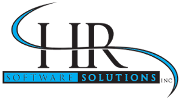In today’s busy business scene, there’s a big buzzword: regulatory compliance. With so many rules and standards, companies have to be alert all the time. But it’s more than just jumping through hoops. Regulatory compliance is the safety net. It protects both the business and its customers. Now, you might wonder, why all this talk about compliance? Well, think of enterprise project management.
Just like how enterprise project management streamlines projects, regulatory compliance keeps businesses in line. It’s not just another checkbox. It’s the heart of safe and responsible business. And if it sounds complex, don’t worry. A regulatory compliance consultant can guide the way. They know the ins and outs, making sure businesses get it right. In the world of rules, having an expert by your side can be a game-changer. This guide will delve deep into the essentials of mastering enterprise project management, ensuring that you have the knowledge and tools to harness the true power of EPM.
What Does Enterprise Project Management Mean?
At its core, enterprise project management is the application of project management principles to larger and often more complex organizational challenges. While traditional project management focuses on individual projects, enterprise project management has a broader scope, covering multiple projects that often interrelate.
Why EPM Matters?
Streamlined Operations
Businesses must prioritize alignment. When every resource matters, misalignment wastes effort and skips opportunities. Enterprise project management guides organizations toward alignment. It ensures each project aligns with the company’s main goals, directing all resources – financial, human, or technological – to their most impactful areas. This approach optimizes operations, boosting returns and cutting down inefficiencies.
Risk Mitigation
In a big business, unseen risks can be hidden. They might pop up unexpectedly, turning into big issues. But here comes EPM to the rescue. It gives a clear overview of every project. So, with this big picture from enterprise project management, you can spot risks early on. This early spotting helps companies act fast. They don’t just react; they plan ahead. They get ready for challenges before they grow. So, instead of scrambling later, they take smart steps now. In short, EPM helps businesses stay one step ahead.
Consistency and Standardization
Inconsistencies across projects can be a nightmare. Different teams working with varied methodologies can lead to confusion, miscommunication, and duplicated efforts. EPM tackles this head-on. By establishing and promoting consistent methodologies, processes, and practices across all projects, enterprise project management paves the way for a harmonized work environment. Teams are no longer lost in translation; they speak the same language, use the same tools, and follow the same playbook. The outcome is seamless communication, a better understanding among teams, and an overall environment that’s conducive to productivity.
Improved Resource Allocation
One of the most challenging aspects of project management on a grand scale is resource allocation. Who works on what? How long should a particular project take? Are there enough financial resources to cover all projects? EPM provides clarity in these complex scenarios. By offering a transparent, centralized view of all ongoing projects and their requirements, organizations can make informed decisions about where to place their resources. Whether it’s assigning the right person to a task, earmarking funds for specific projects, or scheduling timelines, enterprise project management ensures that resources are utilized to their fullest potential, reducing wastage and boosting project outcomes.
Essential Components of EPM
Centralized Project Portfolio
In the vast and intricate realm of enterprise project management, clarity and overview are essential. Here’s where the centralized project portfolio shines. Think of it as the command center of EPM. This portfolio is not merely a list but a holistic visual representation that offers a birds-eye perspective of all ongoing projects within the organization. Why is this vital? Projects, more often than not, are intertwined in some manner. Recognizing these interdependencies can be the difference between seamless execution and chaotic overlap. With a centralized portfolio, decision-makers can spot these connections and, thus, make informed, strategic decisions that benefit the entire enterprise.
Robust Tools and Software
In today’s tech-driven era, relying on manual methods or outdated systems in EPM can lead to inefficiencies or, worse, errors. Enter the world of advanced EPM tools and software. When chosen wisely, these digital assets can dramatically amplify the efficiency and accuracy of enterprise project management. But what should one look for? Firstly, these tools should be capable of seamlessly handling the intricacies of multi-project environments. Moreover, they need to offer in-depth insights, have robust reporting capabilities, and above all, foster efficient communication between teams. In essence, your chosen EPM software should be the silent workhorse, propelling projects forward with precision.
Trained Personnel
While tools and software play a pivotal role, it’s the human touch that truly drives EPM’s success. Machines and software provide data; people provide insights. It’s crucial, then, that the personnel handling these tools are proficient in the nuances of enterprise project management. This goes beyond basic training. It’s about immersing them in EPM principles, familiarizing them with best practices, and ensuring they understand the methodologies inside out. When your team members are well-versed in EPM, they not only use the tools effectively but also bring forth innovative ideas, problem-solving skills, and the ability to adapt to changing project landscapes.
Organizational Buy-In
Think of a big ship. Even if it’s huge and strong, it won’t go far if the crew doesn’t work together. The same goes for EPM. It has a lot to offer, but it needs everyone on board. It’s not just about the big bosses saying “yes”. Every person in the team matters. From the new guy to the team leader, everyone needs to get what EPM is about. They all have to buy into the idea. When everyone gets it and works together, good things happen. Projects go smoother. Teams find solutions together. And the whole company chases its goals with more energy. Everyone pushing in the same direction makes a big difference.
Best Practices for Enterprise Project Management
Goal Alignment
Before plunging into the world of EPM, one must first anchor all projects to the company’s overarching objectives. This isn’t just about ticking boxes. It’s about infusing every task, every project, with a sense of purpose and direction. When each project aligns with the broader vision, every effort feels meaningful, and the path to success becomes clearer for everyone involved.
Continuous Monitoring
Business isn’t static; it’s an ever-evolving entity. Given this dynamic nature, a set-and-forget mentality won’t cut it in EPM. Instead, one needs to be vigilant, continuously assessing and recalibrating the project portfolio. By maintaining this steady oversight, organizations can ensure that they’re not just reacting to changes but proactively adjusting to keep their objectives within reach.
Open Communication
The power of open dialogue in the realm of EPM cannot be stressed enough. By creating an atmosphere where team members freely share their insights, voice their concerns, and celebrate their successes, organizations lay the foundation for holistic growth. Open communication not only addresses potential roadblocks promptly but also ensures that best practices are disseminated across the organization, elevating everyone’s game.
Periodic Training
Stagnation is the antithesis of growth. The domain of enterprise project management is always in flux, introducing new tools, methodologies, and best practices. To stay ahead of the curve, regular training sessions are indispensable. These sessions equip team members with the latest knowledge, ensuring they’re always primed to maximize the benefits of EPM.
Flexibility
Standardized processes have their merits, offering consistency and predictability. However, the rigidity can sometimes be a hindrance. To truly excel in EPM, organizations need to strike a balance. While adhering to established protocols, they must also remain agile, ready to adapt to the unexpected or seize new opportunities as they arise.
Challenges in EPM and Effective Solutions
Enterprise project management, for all its benefits, does come with its set of challenges. Let’s delve into these challenges and explore ways to navigate them:
Resource Conflicts
Juggling multiple projects often leads to an overlap in resource demands. The solution? A centralized, transparent view of all projects. By keeping an eagle’s eye on project needs and timelines, organizations can preemptively address conflicts, ensuring that resources are allocated effectively and no project is left in the lurch.
Resistance to Change
Change, while often beneficial, isn’t always welcomed with open arms. Introducing EPM can lead to apprehensions, given its transformative impact on processes. The antidote to this resistance is clear communication. By elucidating the benefits of EPM and addressing concerns head-on, organizations can foster acceptance and smooth the transition.
Conclusion
In an era where efficiency, consistency, and strategic alignment are paramount, enterprise project management stands out as an invaluable methodology. Through EPM, organizations can streamline operations, mitigate risks, and ensure that every project aligns with broader business goals.
For those looking to dive deep into this realm, understanding its components, benefits, best practices, and potential challenges is key. Armed with this knowledge, you’ll be well-placed to harness the full potential of enterprise project management and steer your organization toward unparalleled success. Whether you’re just beginning your EPM adventure or are looking to refine your existing processes, we hope this guide serves as a valuable resource in your quest for organizational excellence.
Read More:
Unlock the Potential of Your Finance Department With Workday Financial Management
How Workday Financial Management Sets Itself Apart: a Closer Look
The Benefits of Project Management Software: Simplifying Tasks and Maximizing Productivity
HRSS can help you transition your company’s HR department into an efficient, reliable, functioning unit
Related Posts

Strategic Workforce Planning with Workday

Innovative Strategies in Workday Solutions
About Us

With HR Software Solutions as your partner throughout the involved HR system implementation process, all of your needs will be met.